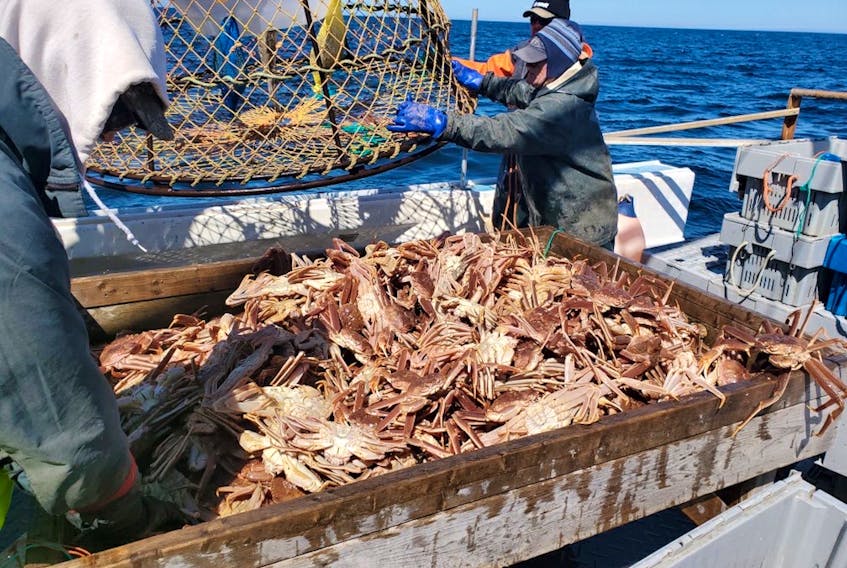The federal government set aside nearly half a billion dollars to help fish harvesters during the COVID-19 pandemic but just one-third of that has been spent.
A spokesperson for the Department of Fisheries and Oceans (DFO) in Ottawa told SaltWire the $469 million program rolled out in May was undersubscribed.
“The seasons were actually much stronger than we predicted, and there were no (COVID) outbreaks in 2020 on any wharves or fishing boats.”
The COVID virus showed up in Canada in March, just as fish harvesters were gearing up for the spring and summer fishing season on the East Coast.
There were early signs that the pandemic would have an impact on fish sales. The food-service industry was pulling back on orders as restaurants and cruise ships shut down.
There was also fear over the possibility of COVID outbreaks on board fishing boats.
In May, Ottawa announced $469 million for two programs specifically aimed at fish harvesters.

Money for harvesters
The Fish Harvester Benefit fund, pegged at $267.6 million, was to provide income support to self-employed fish harvesters and fishing crews who were not eligible for the Canadian Emergency Response Benefit (CERB).
The Fish Harvester Grant Benefit and Grant (HBG), worth $201.8 million, was allocated for fishing enterprise owners to cover additional business costs created by COVID.
According to the Department of Fisheries and Oceans (DFO), about one-third of the money set aside for those two programs was spent up to Dec. 31, 2020.
“To date, this financial support has totaled more than $129 million. This number will continue to increase as we work through additional administrative reviews of applications,” the department said in a press release.
According to the department, the Fish Harvester Benefit and Grant (HBG) fund aided more than 18,000 fish harvesters across every province and territory.
The bulk of the money spent so far has gone to the Atlantic provinces, with approximately $35 million spent in each province of Newfoundland and Labrador and Nova Scotia, $18 million in Prince Edward Island and $9 million in New Brunswick.
In Newfoundland and Labrador, 5,498 people received funding through the programs, and In Nova Scotia, there were 4,846 clients.
Just over 1,800 people received funding in Prince Edward Island and 1,155 people were funded in New Brunswick.
Although COVID shut down the restaurant and food-service industries, and caused a decrease in prices, the fishing industry in Atlantic Canada still managed to pull in some impressive numbers in terms of landed value.
In Newfoundland and Labrador, for instance, the landed value of snow crab decreased by about $100 million but still brought in about $203 million for fish harvesters,
In Nova Scotia, New Brunswick and Prince Edward Island, the landed value of snow crab was $200 million.
The lobster fishery in Nova Scotia and PEI also took a hit early in 2020, as the market in China slowed down because of COVID.
The spring lobster fishery saw lower than usual prices for their catch, but by the time the fall fishery was ready to open in South West Nova Scotia, lobster prices were back to almost normal at around $10-11 per pound.
The lobster fishery is worth nearly half a billion dollars, collectively, for those two provinces.

The $469 million fund created for fish harvesters will continue to pay out in 2021, the department spokesperson said, as fish harvesters apply for their second payment.
The federal government also announced a $62 million aid package in April for fish processing companies across Canada to cover the costs of equipment and supplies to enable the plants to continue operating during the pandemic.
Some of the extra costs associated with COVID included: Plexiglass barriers on processing lines, personal protective equipment for workers and people and equipment to carry out daily health checks for workers.
That fund was administered by the Atlantic Canada Opportunities Agency (ACOA).
SaltWire has requested a breakdown on the money distributed through that fund and will update this story when that information becomes available.









